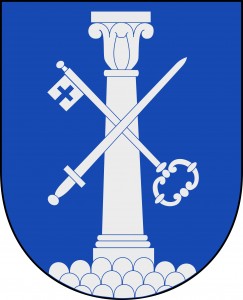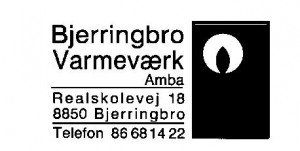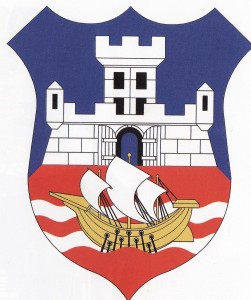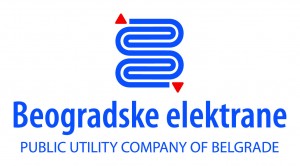Global District Energy Climate Awards 2013
District energy systems from all over the world were called upon to apply for Global District Energy Award 2013. The award aims at recognizing the achievements of cities and communities across the globe that demonstrates local district energy leadership in providing clean, sustainable energy solutions. 2013 marked the third round of the competition, and the focus remained on:
- Identifying and recognizing systems that illustrate the overall importance of district energy (heating & cooling) in providing sustainable energy solutions.
- Providing a global benchmark for environmental excellence.
- Offering a platform for sharing successful ideas and efforts and encourage further interest in district energy.
The 2013 edition applications and winners for download are available here
Below are the 2013 Winners:
Municipal Schemes Serving More Than 10.000 Citizens
The winner of the award in Expansion was presented to:
Municipal Schemes Serving More Than 10.000 Citizens
The winner of the award for Modernisation was presented to:
| Name, location of the system & Logo(s) | Description |
|
The brilliance of a district energy system FalunFalun, Sweden
|
HistoryFalu Energi & Vatten (Falu Energy & Water) is taking responsibility by developing the community of Falun, county Dalarna. Our cooling & heating plant is situated on the brink of the world heritage, Falu copper mine, which for many centuries was one of Sweden´s foremost business activities. That is a tradition we are carrying on.Climate impact Falun´s investment in climate neutral production of heating, cooling and electricity has globally reduced CO2 emissions by 145 000 tonnes/year. This is equal to emissions from 47 000 cars! Large investments have been made to replace fossil energy and reduce the global CO2 emissions with renewable power production. Since 2007 the annual production has doubled. The system Over the past five years Västermalmsverket has evolved from being solely a combined heat and power plant. By investing in an absorption cooling machine we have reduced the use of electricity for conventional cooling installations. At the same time we are able to increase the production of electricity at Västermalmsverket. We have built a wood pellet factory which helps us to produce more renewable energy during the warmer period when the need for heat is at its lowest. By doing so we have increased our electricity production and we get wood pellets to use in our district heating production during the winter. These four ingredients make our plant a combined bioenergy plant – it is unique due to simultaneous production of heat, cooling, electricity and wood pellets. And by the end of summer 2014 the system will include district heating being transported through a line between the cities of Falun and Borlänge. This increases our possibility to maintain district heating as a competitive product. Opportunities for the future In order to develop a sustainable district heating industry there is a need to spread knowledge about district heating´s minimal environmental impact. This knowledge needs to be transferred not only to customers and the public. It is also important that politicians, policy makers, officials and industry understand total systems and the large picture. The Sunstore4 project has been developed and implemented by a large international research group, in the framework of a FP7 funded European project. |
|
District Energy St. PaulSaint Paul, USA
|
Integration is the hallmark of District Energy St. Paul’s system. From its inception, District Energy St. Paul envisioned a future that used district heating and cooling infrastructure to integrate a variety of local, renewable energy sources and technologies. District Energy has doubled the amount of buildings served from 1985, yet is producing less carbon thanks to the incorporation of biomass, CHP, and solar. Our customers benefit from a modern, integrated system offering fuel flexibility, advantages for green certifications, and renewable energy and energy conservation technologies.The heating system serves more than 32 million square feet of building space and operates at twice the efficiency of the former steam district heating system while using the same amount of fuel. Our system has achieved notable reductions of greenhouse gas and other criteria pollutants resulting from our drive to maximize renewable fuels, increase fuel flexibility and fully integrate efficiency. The carbon footprint from our high-performance solar thermal installation resulted in carbon emission reductions of approximately 460,000 pounds in 2012. Our combined heat and power plant has reduced sulfur dioxide and particulate emissions, carbon dioxide emissions, and the use of oil, natural gas and coal. Beginning in 1993, the integration of district cooling significantly reduced the use of chlorofluorocarbon (CFC) refrigerants in customer buildings. We are proud that we offer environmental benefits in addition to fuels and technologies providing a platform to achieve rate stability.District Energy has fully integrated our own large-scale solar thermal installation into the district heating system, integrated a customer’s solar thermal installation into the heating system loop, enhanced the data collection and metering components of the system, installed fiber optic lines in much of the distribution system and developed a Delta T program for customers to manage efficiency. Modernization has not been limited to the pursuit of system enhancements and energy efficiency improvements. Communication and community engagement has changed deepen the conversation with customers, community members and stakeholders about global climate change and the ways we can minimize our energy footprint. Without resting on our laurels, we continue to evaluate opportunities including seasonal storage of hot and chilled water, flue gas capture and reuse, and the integration of energy islands.
|
|
Twence: A Top Supplier of Sustainable EnergyHengelo, Netherlands
|
For years, the public debate on how to achieve a more sustainable supply of energy had focused on electricity. Waste processor Twence realised that using residual heat from the production of electricity and even replacing the production of electricity by supplying heat and steam (especially to replace natural gas) would have greater positive effects, both for the environment and for a more efficient use of the energy generated from waste (WtE) and biomass.First of all, the source of energy not only had to be sustainable but above all also reliable. Ensuring a reliability of supply of over 99% would require at least two different production sources. To that end, and to enable better economies of scale in the production of energy from waste, Twence invested in a new WtE line and a dedicated biomass power plant.The main challenge was to forge partnerships with contracts that would enable investments to last 20 years. We succeeded in doing so with the two main potential customers: AkzoNobel for steam (to evaporate brine in their salt-production plant) and Essent for heat (for district heating), in both cases to replace their gas-fired boilers and CHP plants. In 2009 and 2010 we invested over €15 million to connect our power plants to Enschede’s municipal district-heating system. This involved technical in-plant modifications to enable the sourcing of steam and heat as well as long-distance transport pipelines connecting our plants to the main system in Enschede. This was done in close cooperation with energy company Essent, which operates that system to provide heat to end-users. In close cooperation, Twence and AkzoNobel invested over €10 million in technical plants and a pipeline for transporting steam to AkzoNobel’s salt production plant in Hengelo. In 2011 and 2012, using steam from Twence, AkzoNobel already managed to reduce its natural gas consumption by some 90 million Nm3 and to avoid emitting more than 165,000 tonnes of CO2. This led the AkzoNobel board of management to recognise the Hengelo site as one of the company’s most sustainable plants. In two years, starting in 2011, both projects saved a total of over 120 million Nm3 of natural gas, and some 220,000 tonnes of CO2 emissions were avoided. The setup was further expanded in late 2012 with a major increase in the supply of steam to AkzoNobel. Studies are investigating the possibility of extending the system to supply the district-heating networks in Hengelo and other communities in Twenty years. |
Municipal Schemes Serving More Than 10.000 Citizens
The Winner of the Award for New Scheme was Presented To:
Small and medium Communities Serving Less Than 10.000 Citizens
The winners of the award for Campus-sized systems
The 2013 Special Awards
The special award for Innovation was presented to:
The special award for Integration of Renewable Energy was presented to:
Applications were received form 25 cities/systems.
The 2013 edition applications in alphabetical order are available here
Below are the applications (not selected for an award) received in alphabetical order by name of the system
| Name, location of the system & Logo(s) | Short Description |
| By an ambitious environmental plan and a cooperation between local industries and the municipality we have created a win-win district heating scheme.We have substituted fossil oil equivalent to 50GWh by local surplus heat from a local pulp and paper industry. As our back-up we use renewable biodiesel.We provide secure, inexpensive and climate friendly heating to half the population of Bromölla. We have replaced import of fossil oil by local energy and this way created new local jobs. Bromölla is a small, low density populated town, quite similar to an American small town, without a dense town center. |
|
|
CHP for Medias Hospital Medias city Sibiu CountyMedias, Romania
|
The Microturbine produces in cogeneration system high-efficiency power (0.4/50 Hz) and heat from exhaust gas using natural gas as fuel. In the case of natural gas supplied from the distribution networks, it is necessary to mount a compressor downstream of the microturbine to ensure the minimum required pressure of 5.2 bar.Natural gas supply installation consists of o sectioning valve (with sphere, slide pinion valve, or butterfly) # 8.01 which separates the gas supply installation of the microturbine, of the main supply column of the existing central heating boilers. As a safety feature in the case of exceeding certain parameters of installations downstream of the microturbine (SRH- exhaust gas heat exchanger/water), an electromagnetic valve is being mounted #8.17, which is controlled by a PLC (Programmable Logic Controller). The gases are filtered by filter # 8.06. and their pressure adjusted by the locking device regulator and overpressure device # 8.00. Flow metering is made via turbinemeter # 8.07 and of PTZ volume corrector # 8.08. Natural gas are thus vacuumed into the gas compressor # 8.09 at a pressure of 100 mbar input up to 110 mbar, and are repressed at a pressure of 5.2 bar.As a safety element downstream of the compressor is mounted a purge valve # 8.19 to eliminate overpressures that may arise from sequences of stop / start (pick shaving). The gases resulting from the combustion of the microturbine #CHP-MT, are discharged through the exhaust duct, damper sense # 1.01, and through the by-pass equipped with butterfly valve #1.03 to be directly in the air on the chimney # 1.08 ( in the case that is desired the exclusive production of electricity, in certain sequences of stop/start, and when temperature and /or the pressure of the SRH heat exchangers exceed the set parameteres), to be passed through the heat exchanger #1.04 thus ceding the heat of the water flowing through it. The water’s temperature for flow/return, in the heat exchanger is 90/70 degrees Celsius. |
|
Con Edison Steam System County of ManhattanNew York, USA
|
For 130 years, Con Edison has had the privilege of being the energy service of choice to many of New York’s most prominent and unique properties. The Company’s plan is to continue to provide Steam Service to customers by maintaining the current high reliability and operational excellence on production and distribution, incorporating technological advancements into the system, optimizing system efficiency, pursuing new opportunities for productivity, performance improvements, and cost reductions, and by bringing additional value to the customer base. The Con Edison Steam System has earned several prestigious awards and recognition in recent years which include the USEPA Energy Star Combined Heat and Power award for East River Stations’ Units 1&2 for significant energy savings (2009) and two IDEA Awards for “Best System of the Year” in 2000 and 2007. In addition, the Company has received recognition for carbon disclosure and reduction. The Con Edison Steam System, being the producer of steam and electric in the Company, was a major contributor to these reductions. In 2011, Con Edison placed first among utilities in the S&P 500 Carbon Disclosure Leadership Index, was the only utility listed in the S&P 500 Carbon Performance Leadership Index, and was #1 Utility in Newsweek Green Rankings. Con Edison’s steam facilities are operated and actively monitored to reduce regulated pollutant emissions. A significant district energy benefit of this remote and controlled emission is the removal of any air quality issues for development or renovation. Situating a stack and accounting for dispersion of flue gases for onsite boilers can restrict both the property served and any surrounding development. In Manhattan, this is a significant concern. By using steam, customers benefit from better building aesthetics (e.g. no flues, cleaner facades), there’s more rentable space for building owners, there are no stationary engineers or licensed boiler operators required for high-pressure operations, and building owners avoid boiler operating expenses (labor, service contracts, chemical costs, water treatment, and maintenance). Funds that would be diverted to these functions can be directed toward tenant service instead. In 2012, 64% of steam supplied by Con Edison was produced using cogeneration technology, which resulted in the avoidance of 430,000 tons of CO2 that would have been otherwise produced from conventional electric generation and non-cogenerated steam generation. |
|
Co-Op City CHP Plant Bronx,New York, USA
|
The Co-Op City complex is a housing cooperative located in Bronx, NY, originally constructed in 1973. The complex includes 15,372 units located in over 35 buildings, and houses approximately 60,000 residents. In 2007, the cooperative board began the process of upgrading the site’s outdated central heating plant to a combined heat and power plant meeting the facility’s electrical and thermal needs, and allowing for operation independent of the local utility system. The result was a flexible, 40 MW design utilizing a high pressure boiler and two combustion turbines with heat recovery steam generators to supply steam to a turbine generator whose exhaust would meet the site’s thermal load requirements. The inclusion of steam turbine-driven chillers in the design would allow the system to operate with a high annual capacity factor.This system, which was built leveraging a $2 million incentive from the New York State Energy Research and Development Authority (NYSERDA), is one of the pioneer micro grid applications in the New York City Metro Area. The CHP plant provides much needed energy generation reliability to the residents, and allowed the complex to recently weather Hurricane Sandy with minimal disruption. In addition to improving energy efficiency and system reliability, the Co-Op City CHP plant has reduced the cooperative’s greenhouse gas emissions from purchased electricity and fuel oil consumption by 143,105 metric tons per year, or over 50%. |
|
District cooling system in Šaleška Valley Velenje,Saleska, Slovenia |
The subject of our application is a district cooling system in the city of Velenje, Slovenia. There the cooling energy is produced in absorption chillers. The heat for their operation is supplied from an existing district heating system. In it the supply temperatures are sufficient to power the absorption chillers through the whole year, due to industry consumers. The heat source for the district heating system is surplus heat from a power plant. The system is facing problems with low energy and economic performance in the summer months due to relative low heat demands by consumers. As a consequence an opportunity was recognized to use the heat from the distribution network to power the absorption chillers and by doing so improving the distribution network performance, as well as producing cooling energy from surplus energy, instead of using the electric energy for the electro-compressor technology. Thus there are several direct and indirect benefits to the community in the area where the system is in operation. |
|
Drammen Fjernvarme District HeatingDrammen, Norway
|
UK firm Star Refrigeration has launched a groundbreaking renewable energy heating system, which will heat homes and businesses across an entire city in Norway.The Glasgow-based cooling solutions specialist, with Norwegian refrigeration partner Norsk Kulde, has just sold its first Neatpump to the city of Drammen. The system will supply hot water pumped through a network of underground pipes for heating over 6,000 homes and businesses in the city.Star’s Neatpump will provide up to 15MegaWatts of heat for Drammen, a community of 60,000 on the Drammen Fjord near Oslo. Due to be completed in January 2011, it will be the world’s largest district-wide natural heat pump system. It also marks the largest export order in Stars 40-year history as one of the UK’s leading industrial refrigeration engineering companies. Star’s Neatpump is a renewable energy heat pump that extracts heat from seawater, air or any industrial waste stream, such as air conditioning or large scale cooling processes. This waste heat is captures, compressed, boosted and recycled to provide hot water at up to 90?C for heating buildings on a massive scale. Heat pumps are becoming increasingly popular across Europe as the heat they deliver far exceeds the energy they consume. District heating sees heat generated in a centralised location distributed for residential and commercial heating. Star’s Neatpump in Drammen, Norway Unlike its forerunners, Star’s Neatpump system does not require any synthetic global warming gases (HFCs). It operates using ammonia, a naturally occurring refrigerant that has zero ozone depletion potential. Ammonia has never been used in a high temperature heat pump allocation of this type. Electricity for the Drammen system is provided by hydropower, making the Neatpump’s carbon emissions virtually zero. |
|
Dubai Healthcare City Treated Sewage Effluent-Reverse Osmosis Plant EMPOWER –District Cooling PlantDubai, UAE
|
The major challenges that face any district cooling provider are to operate the chiller systems with the highest achievable efficiency, minimize water wastage and reduce the cost of operation.This documentation was prepared to demonstrate how the conversion from the usage of potable or domestic water in district cooling plants into alternative water sources (specifically Treated Sewage Effluent) can be achieved and showcases this accomplishment with the integration of reverse osmosis technology. The financial savings incurred from this approach are also demonstrated.It is important to define that “domestic water” is the potable water produced by the local governmental utility DEWA (Dubai Electricity and water authority) using the process of sea water desalination. This water is distributed throughout the city of Dubai for the domestic use. On the other hand, “TSE”, treated sewage effluent is the sewage water recycled by the local Municipality DM (Dubai Municipality) through a Sewage Treatment Plant. TSE water is primarily used by the local municipality for irrigation. The key concern involving the use of alternative water sources other than domestic water such as grey water or treated sewage effluent is that it is not advised to be used directly in the District Cooling System unless it is treated due to the high risk associated with using it in the raw form. The risk arises from the fact that this type of water contains high concentration of contaminants and high biological fouling potential which would degrade the performance of the heat exchange equipment. Several simulation calculations were done to provide a range of alternatives to the use of domestic water in the cooling towers of a district cooling plant. These calculations helped to narrow down the options and provided a guide to select the optimum combination of Treated sewage effluent water mixed with treated TSE through reverse osmosis technology. As a result of this analysis, the optimum approach was chosen which uses the permeate water from the reverse osmosis plant and blended it with enough quantity of pre-filtered treated sewage effluent to make it equivalent to domestic water in chemical properties. By following this approach, several goals were achieved. – Eliminated the use of valuable domestic water from the district cooling plant. – Reduced the risk potential of the treated sewage effluent. – Implemented an economically viable solution. |
|
ENERGICENTRALEN Bjerringbro, Viborg KommuneBjerringbro, Denmark
|
Energicentralen: a jointly owned district energy plant to the benefit of citizens and industrySee video: https://www.youtube.com/watch?v=P6E_D3hBnj0&feature=youtu.beImprovements of the local environment and a positive effect on the climate due to reduced CO2 emissions are two important results of this project created by an equal partnership between Grundfos and Bjerringbro Varmeværk (DH Company). A third result is a reduction of the annual fuel costs. Energicentralen is the jointly owned energy station hosting five compressors to co-generate heating and cooling. It is linked to a nearby Aquifer Thermal Energy Storage (ATES) used as a seasonal storage. Energicentralen is also connected to Grundfos’ machinery via a new cooling network and to the CHP-plant and the DH-station via an existing heat transmission line. The two partners have shared – one to one – the total investment of 4.48 mill. €. Also the savings achieved are equally shared so that each partner will save 200,000 € annually. The pay back period will be less than 15 years and the annual reduction of CO2 emission will be about 3,700 tons. The plant performs as follows: • 3,500 MWh of cooling based on 9° C groundwater will during four months in the summer be supplied by from the ATES and will cover the full demand in the machinery connected. • 10,500 MWh of cooling will during 8 months be supplied by the cooling machinery in Energicentralen, which will cover the full cooling demand and the re-cooling of the groundwater. • 13,400 MWh of district heating will be produced yearly by heat from the cooling machines. Bjerringbro Varmeværk was founded in 1959 and today has 2,100 consumers (buildings) with an annual production of 90,000 MWh. The new plant will cover some 15% of the annual demand. The original boiler station from 1959 was designed for operation on oil but has later on been converted to operate on natural gas. In 1994 a CHP-plant based on natural gas engines was added, and in order to achieve flexibility between power and heat generation, a heat storage tank was installed. In recent years, heat pumps were installed to cool and condense the water in the flue gases in order to increase the heat production. The project demonstrates that the innovative solution was created by virtue of the open and equal cooperation between the two partners. It turned out quite early in the planning process that each of them alone was not able to realise savings to the same extent as achieved |
| EnergyPLAN – Advanced Energy System Analysis Modelwww.EnergyPLAN.euPDF Summary |
The EnergyPLAN model is an advanced energy systems analysis model, which allows for the analysis of complete energy systems of a town, a country or the whole of Europe including future sustainable energy systems.The model has been used to identify the role of district heating and cooling in present and future energy systems showing the benefits of including district energy.The EnergyPLAN model has among others been used to make the following studies: Heat Road Map Europe (Pre-study-I) (2012) showing how Europe would benefit from increasing the share of District heating from the current level of 12% to 50%. Decrease in CO2 emission and annual cost and at the same time create 120.000 jobs. Heat Plan Denmark (2008 & 2020) showing how district heating plays a major role not only in the current energy supply but also in a sustainable energy future in which the space heating of the buildings have been decrease by 75%. Heat startegies for Towns/municiplaties (E.g. Aalborg and Frederikshavn) showing the inportance of district heating in the transformation towards sustainable energy systems. Towns like Aalborg and Fredeikshavn has made policital decisions on expanding district heating and such palns are being implemented. Heat Plan Denmark has been adopted into the official strategies of the implementation of the Danish Energy future. Heat Road Map Europe is being used to influence the European strategies on district heating and cooling The EnergyPLAN model is a freeware which can be acessed from: www. EnergyPLAN.eu |
|
JKP ‘Beogradske elektrane’Belgrade, Serbia
|
Before heating season 2009/10. PUC “Beogradske elektrane” burns up to 10.000 tons of coal per year. Besides high emissions of SO2, CO, NOx and particulates there is a serious problem of ground contamination with coal and ash during transport, handling and storage. This is another important reason for introduction biomass in coal fuelled boilers and thus further decreasing the consumption of coal and introduction of renewable. The JKP “Beogradske elektrane” has performed investigations on possible utilization of solid biomass in existing boilers, originally fuelled with coal. The main goal of these investigations was to analyze possibilities of utilization of biomass without modifying the existing boilers.The extensive results obtained during the research proved to be very useful for better understanding of performance and operation of coal fuelled boilers when using solid biomass and confirm that the change from coal to briquettes and pellets can be done the way the Utility Company of Belgrade planned. Following the current heating technology concepts and the high price of fossil fuels, the JKP “Beogradske elektrane” has paid particular attention to energy efficiency increase and the environmental protection and global warming issues by investigating possibilities to introduce renewable for heat production in Belgrade.During the last 30 years period JKP “Beogradske elektrane” has closed over 1000 coal or oil fuelled local heating units and connected the consumers to district heating systems operating on natural gas, thus substantially improving quality of life in Belgrade by reduction of emissions of pollutants and CO2 emissions. Four year experience resulted in following important findings: • Wood briquettes and pellets can be utilized as a substitute for coal for some types of boilers and continuous fuel feeding systems without modifications of boiler sub-systems, except possible minor adjustments for control and operation of boiler. |
|
Lambda Test SystemVienna, Austria
|
Test system design and measurements of the thermal conductivity for composite pipesA significant fraction of human energy consumption is used for heating purposes thus efficient and durable insulation is a necessity. Although different materials have been used to insulate district heating pipes over the last decades only few studies have been conducted on the long-term aging effects. This study has two main objectives: First, the development of a cost efficient and reliable measurement system to determine the thermal conductivity of insulation layers in compound pipes. Secondly, to analyze unused and used plastic jacket pipes in order to study the change of thermal conductivity due to aging effects in the insulation material for PUR closed-cell foams.A variety of factors have to be considered in the design of a measurement system (e.g. the most suitable time constant, amount of available funds, sensor type, means of measuring surface temperatures, data acquisition layout and operation). The guidelines for such measurements given in appendix F of the European standard EN 253 and general literature have been researched and implemented as far as possible. The measurement system uses thermal equilibrium of the sample pipe with an ambient air volume and heating power monitoring to calculate the thermal conductivity of the insulation layer. The setup consists of a specimen housing where the samples are mounted on two support posts in a temperature controlled environment, a control unit which regulates the heating and cooling elements and a data acquisition unit which converts the electric sensor signals into a digtial data stream accessible via a virtual serial port. A small number of samples was chosen and more than 200 measurement runs conducted. The results indicate a smaller deterioration of the insulation properties than former studies with artificially aged pipes stated. The used sample pipes showed that even after prolonged operation of more than 20 years at usual temperatures in the range of 80°C to 90°C only small relative increases in thermal conductivity smaller than 10% can be detected. Furthermore this project has highlighted the possibilities for low-cost testing systems for plastic jacket pipes. |
|
Stanford University District Energy System Stanford University, CaliforniaStanford, USA
|
The Stanford Energy System Innovations (SESI) project is a $438 million major transformation of the campus district energy system. The transformation is from gas fired combined heat and power with steam distribution to electrically powered combined heat and cooling with hot water distribution. When completed in April 2015, the new heat recovery system will be 52% more efficient than the existing cogeneration system; immediately cut Stanford’s Category I and II GHG emissions in half; save 20% of Stanford’s drinking water supply; and save $303 million (20%) over the next 35 years compared to the existing system.The heart of SESI is heat recovery- approximately 70% of waste heat from the campus chilled water system (currently being discharged out evaporative cooling towers) will be reused to meet 80% of campus heating loads through the use of industrial heat recovery chillers and conversion of the campus heat distribution system from steam to hot water. SESI includes:• installation of a new electrically powered central energy facility built around heat recovery; • demolition of the existing cogeneration plant; • installation of 20 miles of new hot water distribution piping to replace the campus steam system; • conversion of 155 building connections from steam to hot water; • installation of a new campus high voltage substation. SESI is unique and innovative in design, implementation and impact. SESI advances heat recovery in district energy to scales heretofore unseen. It is achieving direct and immediate environmental improvements and cost savings at a dramatic scale, while opening a flexible and lasting path for Stanford to continually achieve sustainability. SESI combines cutting edge technology from both North American and European district energy systems; its development has led to the creation of new state of the art district energy plant operating software and spawned a startup company; and it is expected to be amongst the most efficient trigeneration district energy systems in the world. |
|
Veolia Energy PhiladelphiaPhiladelphia, USA
|
Veolia Energy Philadelphia’s Green Steam Conversion reflects extensive infrastructure upgrades at the Philadelphia district network, which simultaneously increased our operating efficiency and reduced our environmental impact, benefiting the 500+ buildings (100 million sq. ft. of space) on Philadelphia’s 41 miles of district energy network.In 2008, the University of Pennsylvania (Penn), our largest US customer, was up for contract renewal. As one of the original signatories of the American College & University Presidents’ Climate Commitment, Penn is an environmental leader, including energy generation and procurement. Veolia Energy and Penn sought to overcome the challenge of the high cost and environmental impact of burning #6 and #2 fuel oil in Veolia Energy’s generating assets. In addition to fuel sourcing and pricing transparency, Penn also sought to maintain reliability by reducing the time to power back-up systems.After an extensive technology, efficiency and operational review, Veolia Energy determined that it could accomplish Penn’s goals through a change in equipment dispatch, which relied upon two significant capital investments: $30 million investment in two 250,000 pph rapid-response boilers; $30 million investment in the expansion of a lateral in the TETCO natural gas pipeline that eliminated a restriction on firm gas supply. This project is not only an innovative solution to Penn’s current energy needs, but also incorporates the flexibility for expansion. Other major institutional users are driving growth with highly specialized medical and R&D uses that require the multiple levels of redundancy that Veolia provides. These institutions now constitute 30% of Philadelphia’s local employment, increasing 20% over the past decade. These innovative Green Steam upgrades literally fuel the City of Philadelphia’s growth sectors. The benefits are not only economic and environmental, but also increased reliability for our customers. Firm gas supply provides sufficient natural gas for 100% of capacity during peak thermal demand in the winter months, enabling increased loading of the CHP so that 100% of district energy can be fueled using our 163 MW cogeneration plant. The primary role of the rapid-response boilers is to reduce the need to idle to maintain standby steam pressure. Veolia’s $60M investment achieved environmental savings of 1.4 million MT GHG and energy savings of 4.9 million MMBTU over the project life. |
| ENERGICENTRALEN Bjerringbro, Viborg KommuneBjerringbro, DenmarkPDF Summary | Energicentralen: a jointly owned district energy plant to the benefit of citizens and industrySee video: https://www.youtube.com/watch?v=P6E_D3hBnj0&feature=youtu.be Improvements of the local environment and a positive effect on the climate due to reduced CO2 emissions are two important results of this project created by an equal partnership between Grundfos and Bjerringbro Varmeværk (DH Company). A third result is a reduction of the annual fuel costs.Energicentralen is the jointly owned energy station hosting five compressors to co-generate heating and cooling. It is linked to a nearby Aquifer Thermal Energy Storage (ATES) used as a seasonal storage. Energicentralen is also connected to Grundfos’ machinery via a new cooling network and to the CHP-plant and the DH-station via an existing heat transmission line.The two partners have shared – one to one – the total investment of 4.48 mill. €. Also the savings achieved are equally shared so that each partner will save 200,000 € annually. The pay back period will be less than 15 years and the annual reduction of CO2 emission will be about 3,700 tons.The plant performs as follows:• 3,500 MWh of cooling based on 9° C groundwater will during four months in the summer be supplied by from the ATES and will cover the full demand in the machinery connected.• 10,500 MWh of cooling will during 8 months be supplied by the cooling machinery in Energicentralen, which will cover the full cooling demand and the re-cooling of the groundwater.• 13,400 MWh of district heating will be produced yearly by heat from the cooling machines. Bjerringbro Varmeværk was founded in 1959 and today has 2,100 consumers (buildings) with an annual production of 90,000 MWh. The new plant will cover some 15% of the annual demand. The original boiler station from 1959 was designed for operation on oil but has later on been converted to operate on natural gas. In 1994 a CHP-plant based on natural gas engines was added, and in order to achieve flexibility between power and heat generation, a heat storage tank was installed. In recent years, heat pumps were installed to cool and condense the water in the flue gases in order to increase the heat production. The project demonstrates that the innovative solution was created by virtue of the open and equal cooperation between the two partners. It turned out quite early in the planning process that each of them alone was not able to realise savings to the same extent as achieved. |
|
Whistler Athletes Village Whistler, British ColumbiaWhistler, Canada |
We have found a tremendous interest in our District Energy Sharing System (DESS) from around the world. So far we have accumulated Awards from organizations such as the Canadian Association of Consulting Engineers (ACEC), the Non-Oil and Gas Energy Infrastructure Project Canada, the Community Energy Association (CEA), the #1 Non-Oil and Gas Infrastructure Project Canada, and been written up in The ACEC Magazine, The ASHRAE Building Operation Award, the ASHRAE Journal, Short-Listed by both The Chartered Institution of Building Services Engineers and the American Waterworks Association. We have had interest from Countries such as France, Russia and Australia. The DESS is Unique, there are no systems like it worldwide. Our studies and the results from the connected systems have shown the same energy saving results that we found with the Whistler installation. We are able to provide references from users testifying to the results from the existing systems. The District Energy Saving System (DESS) not only saves Energy but there are huge savings in Greenhouse Gas Production. |
The Evaluation Panel
The submissions were reviewed by an international panel of experts including the International Energy Agency (IEA) and chaired by the IEA Technology Network.
Chairman of the evaluation panel:
Robin Wiltshire, IEA DHC IA Robin Wiltshire taught high school Physics for 10 years, then carried out research at University of Westminster leading to a PhD in passive solar/heat pump systems for houses. Then took job at BRE in 1995 until now, specialising in CHP and District Heating, and forming and leading Low Carbon Technologies team until current position as Technical Director. Also current Chair of International Energy Agency (IEA) District Heating research programme.
The members of the panel:
Yves Delaby, Chairman of the DHC+ Technology Platform
Peter Byung-Sik Park, Korean Institute of Energy Research. Mr. Byung-Sik Park has nearly 30 year R&D experience in the area of cogeneration systems and district heating and cooling.Currently, he is a project leader carrying out some national research projects related to microCHP systems which are aimed at domestic utilization. He is also leading some research projects on the DH field funded by KDHC.
Raymond DuBose, formerly of University of North Carolina Chapel Hill (recently retired), and a former IDEA Chair. Ray has nearly 40 years of experience in district energy/CHP in addition to serving on the IDEA Board of Directors for 8 years. He is a Founding Member of the ACORE Higher Education Committee and his work at UNC has been recognized by the US Environmental Protection Agency with an EPA Energy Star CHP Award.
Marc LaFrance and Araceli Fernandez Pales, IEA – International Energy Agency

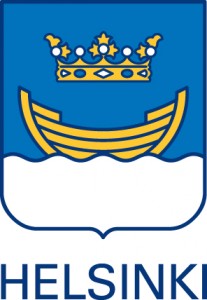
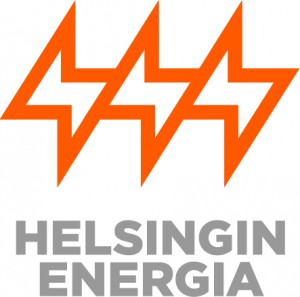
 5:59
5:59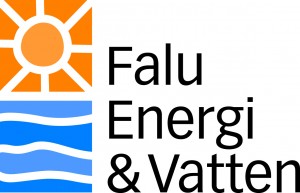
 6:11
6:11 6:28
6:28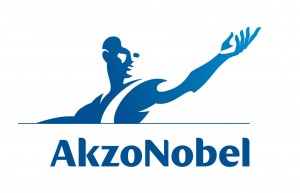
 5:46
5:46 4:21
4:21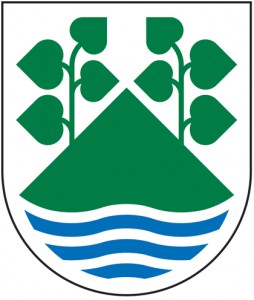

 4:05
4:05
 5:55
5:55
 7:17
7:17
 7:04
7:04 5:36
5:36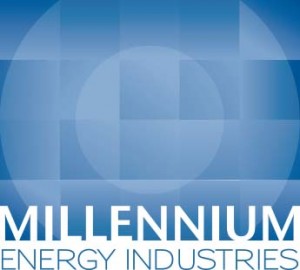

 4:28
4:28





